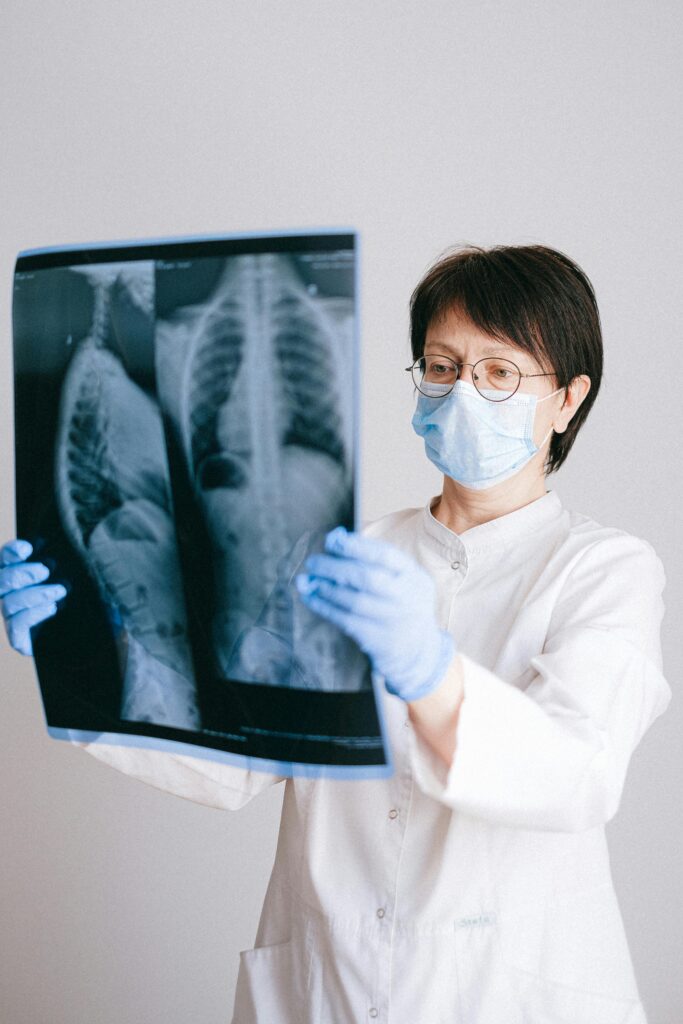Introduction
Lung diseases encompass a wide range of conditions that affect the respiratory system, impairing lung function and overall health. From chronic conditions like asthma and chronic obstructive pulmonary disease (COPD) to infections such as pneumonia and lung cancer, understanding the causes, symptoms, diagnostic approaches, and effective management strategies is crucial for individuals affected by these diseases. This article explores various aspects of lung diseases, their impact on respiratory health, and comprehensive strategies for prevention, treatment, and improving quality of life.
Importance of Lung Health
Maintaining optimal lung health is essential for several reasons:
- Respiratory Function
- Healthy lungs support efficient oxygen exchange and removal of carbon dioxide from the body.
- Lung diseases impair respiratory function, affecting breathing and overall physical endurance.
- Quality of Life
- Lung diseases can significantly impact daily activities, exercise tolerance, and ability to perform routine tasks.
- Effective management improves symptoms, reduces exacerbations, and enhances quality of life.

- Prevention of Complications
- Early detection and treatment of lung diseases prevent complications such as respiratory failure, exacerbations, and secondary infections.
- Managing risk factors reduces the progression of lung diseases and improves long-term outcomes.
Common Types of Lung Diseases
Identifying the type of lung disease is crucial for developing personalized treatment plans and managing symptoms:
- Asthma
- Causes: Genetic predisposition, environmental factors (e.g., allergens, pollution), respiratory infections, and occupational exposures.
- Symptoms: Wheezing, shortness of breath, chest tightness, and coughing, especially at night or early morning.
- Management: Bronchodilators (e.g., albuterol), inhaled corticosteroids, allergen avoidance, and personalized asthma action plans.
- Chronic Obstructive Pulmonary Disease (COPD)
- Causes: Cigarette smoking, environmental exposures (e.g., air pollution, occupational dusts), and genetic factors.
- Symptoms: Progressive airflow limitation, chronic cough, sputum production, shortness of breath (dyspnea), and frequent respiratory infections.
- Management: Smoking cessation, bronchodilators (e.g., tiotropium), inhaled corticosteroids, pulmonary rehabilitation, and vaccination against influenza and pneumococcus.
- Pneumonia
- Causes: Bacterial (e.g., Streptococcus pneumoniae), viral (e.g., influenza, respiratory syncytial virus), fungal infections, or aspiration of food, liquid, or vomit into the lungs.
- Symptoms: Fever, chills, productive cough with yellow or green sputum, chest pain, and difficulty breathing.
- Management: Antibiotics (if bacterial), antiviral medications (if viral), supportive care (rest, fluids), and oxygen therapy as needed.
- Interstitial Lung Diseases
- Causes: Exposure to occupational or environmental toxins (e.g., asbestos, silica), autoimmune disorders (e.g., rheumatoid arthritis), or idiopathic (unknown cause).
- Symptoms: Progressive dyspnea, dry cough, fatigue, and unexplained weight loss.
- Management: Corticosteroids, immunosuppressive medications (for autoimmune causes), oxygen therapy, and pulmonary rehabilitation.
- Lung Cancer
- Causes: Smoking, secondhand smoke, exposure to asbestos, radon gas, or air pollution, genetic predisposition, and family history.
- Symptoms: Persistent cough, chest pain, hoarseness, weight loss, coughing up blood, and shortness of breath.
- Management: Surgery, chemotherapy, radiation therapy, targeted therapy (for specific genetic mutations), and immunotherapy.
Symptoms of Lung Diseases
Symptoms vary depending on the type and severity of lung disease:
- Respiratory Symptoms: Shortness of breath (dyspnea), wheezing, chronic cough, sputum production, and chest pain or tightness.
- General Symptoms: Fatigue, weight loss, fever, and difficulty performing daily activities.
- Acute Symptoms: Sudden onset of severe chest pain, rapid breathing, or cyanosis (bluish discoloration of the lips or fingernails).
Diagnostic Approaches
Diagnosing lung diseases involves a combination of medical history, physical examination, and diagnostic tests:
- Medical History and Physical Examination
- Detailed inquiry into symptoms, onset, duration, exacerbating factors, and past medical history (e.g., smoking, occupational exposures).
- Physical examination to assess respiratory function, chest auscultation (listening for abnormal breath sounds), and overall health status.
- Diagnostic Tests
- Pulmonary Function Tests (PFTs): Measure lung capacity, airflow, and gas exchange to evaluate respiratory function (e.g., spirometry, lung volumes).
- Imaging Studies: Chest X-ray, CT scan, or MRI to visualize lung structure, detect abnormalities, and assess disease progression.
- Laboratory Tests: Blood tests (e.g., CBC, arterial blood gases) to evaluate oxygen levels, infection markers, and autoimmune factors.
- Bronchoscopy: Uses a flexible tube with a camera to examine airways, collect samples (biopsy, fluid), or remove obstructions.
- Biopsy and Molecular Testing
- Tissue biopsy (via bronchoscopy or surgical procedure) to diagnose lung cancer, interstitial lung diseases, or infections.
- Molecular testing to identify specific genetic mutations in lung cancer for targeted therapy.
Managing and Treating Lung Diseases
Treatment goals focus on improving symptoms, preventing disease progression, and enhancing quality of life:
- Medications
- Bronchodilators: Relax airway muscles and improve airflow (e.g., beta-agonists, anticholinergics).
- Corticosteroids: Reduce airway inflammation and control symptoms (e.g., inhalers, oral medications).
- Antibiotics or Antivirals: Treat bacterial or viral infections causing pneumonia or exacerbations of lung diseases.
- Oxygen Therapy
- Supplemental oxygen to maintain adequate blood oxygen levels in conditions like COPD, interstitial lung disease, or during acute exacerbations.
- Pulmonary Rehabilitation
- Comprehensive program including exercise training, education, and psychosocial support to improve lung function and overall well-being.
- Surgery and Interventional Procedures
- Surgical removal of lung tumors (lobectomy, pneumonectomy) or lung transplantation for end-stage lung diseases.
- Interventional procedures (e.g., bronchial thermoplasty) to reduce airway smooth muscle and improve asthma control.
- Lifestyle Modifications
- Smoking Cessation: Quitting smoking is essential to prevent progression of lung diseases and improve treatment outcomes.
- Healthy Diet: Nutritious meals rich in fruits, vegetables, whole grains, and lean proteins support overall health and immune function.
- Exercise: Regular physical activity improves cardiovascular fitness, lung function, and quality of life for individuals with lung diseases.
Preventive Measures
Reducing risk factors and adopting healthy behaviors can prevent or delay the onset of lung diseases:
- Quit Smoking and Avoid Secondhand Smoke
- Smoking cessation programs, nicotine replacement therapy, and behavioral counseling.
- Avoiding exposure to secondhand smoke and environmental toxins (e.g., asbestos, radon).
- Vaccination
- Annual influenza vaccination and pneumococcal vaccine to prevent respiratory infections and complications in high-risk individuals (e.g., elderly, immunocompromised).
- Environmental Protection
- Use protective equipment (e.g., masks, respirators) in occupational settings with exposure to dust, chemicals, or airborne pollutants.
- Ensure adequate ventilation and air quality in indoor environments to reduce respiratory irritants.
- Health Monitoring
- Regular medical check-ups, screening tests (e.g., lung cancer screening for high-risk individuals), and early intervention for respiratory symptoms.

Conclusion
Managing lung diseases requires a multidisciplinary approach, including medical evaluation, personalized treatment plans, and lifestyle modifications. By understanding the causes, symptoms, and diagnostic approaches for various lung diseases, individuals can take proactive steps to improve respiratory health, prevent complications, and optimize quality of life. Effective management involves collaboration with healthcare providers, adherence to treatment recommendations, and ongoing support to manage symptoms and maintain overall well-being.
Resources
- American Lung Association: Provides educational resources, support programs, and advocacy for lung health.
- National Heart, Lung, and Blood Institute (NHLBI): Offers information on lung diseases, research updates, and clinical trials.
- Centers for Disease Control and Prevention (CDC): Provides guidelines on respiratory health, smoking cessation, and lung disease prevention.
Feel free to let me know if you need more articles or further assistance!
